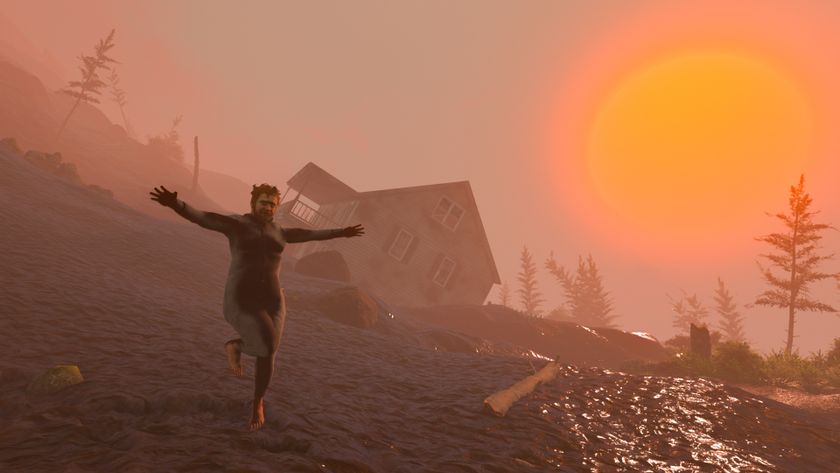The making of Hitman: Codename 47 – "We were asked to prove ourselves with a simple shooter first"
With Hitman 3 now available, Retro Gamer explores the origins story of Agent 47's first covert operation
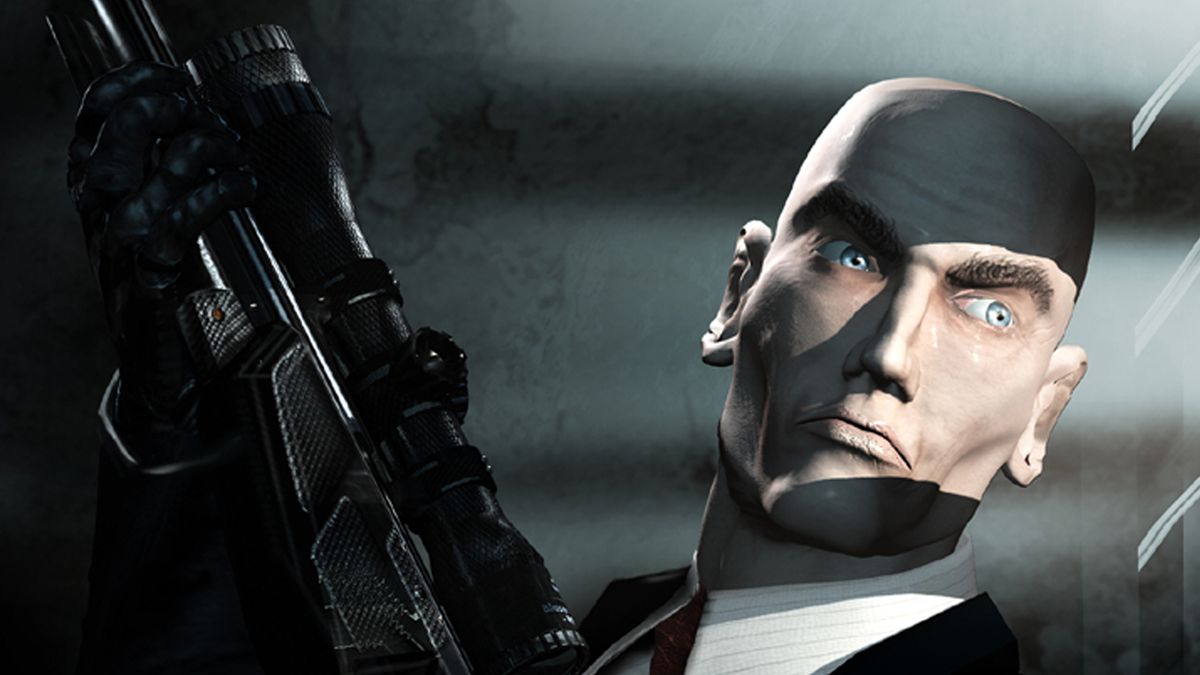
Hindsight is a funny thing. Today, the Hitman series is beloved, with a calculated antihero and a tried-and-tested stealth action setup. Every time you slip into Agent 47's dark suit you know you're gearing up for a succession of guilty pleasures, from filching disguises to assassinating key targets, a formula so good that it has had its share of copycats since. But like any great idea, IO Interactive didn't crack the Hitman code in one sitting. It took hard work and refinement to crystallise the vision, and as we have discovered, a thousand pieces needed to fit together.
The truth is that IO Interactive nearly didn't make Codename 47 at all, and it originally intended to make a simple shooter that would pave the way for bigger and better things. The company was a joint venture between Reto-Moto, a Danish development house, and Nordisk Film studio. The former wanted to make a fantasy MMO they had dubbed Rex Dominus. The latter was hesitant. "One of the marketing guys at Nordisk Film persuaded us to stop development on Rex Dominus," recalls lead designer Jacob Andersen. "We were asked to prove ourselves with a simple shooter first."
A run-and-gun action game would indeed be quicker to create and it would give Jacob and his team the leeway to get back to their world of might and magic. So they changed tack, drafting storyboards for an action game based on John Woo movies like Hard Boiled and The Killer. You'd play an assassin in a suit icing Chinese mafia types, hardballers spitting fire and fury.
Many of IO Interactive's workers had cut their teeth making Mega Drive titles in Los Angeles for Scavenger, Inc, but this new game would be built for the PC. Why? "Well, it was hard for us to get hold of development kits in the new setup," Jacob recalls. "On top of that, 3D hardware was beginning to appear for the PC, which made it extremely interesting to develop for."
Investing in the future
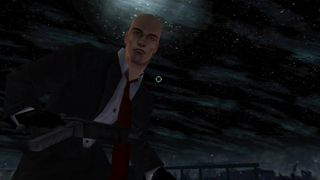
The Glacier engine was built and IO spared no expense. "Since killing was the main theme of the game, we wanted to do something special," Jacob says. "Standard 'death animations' just looked too static so some of the coders tried to see if they could use real-time inverse kinematics for the falling bodies. The first versions ran terribly slowly until one of the programmers figured out a way to fake the whole calculation."
As fate would have it, IO Interactive was introducing proper ragdoll physics into the fold, which is one of the first examples of the technology. In other games around the same time, enemies would fall down in a canned animation, but IO's shooter was different. Enemies collapsed based on the wound and the environment.
This technology caught the eye of Eidos, and in particular, Jonas Eneroth, who would go on to executive produce Codename 47. "The ragdoll physics really opened up opportunities to explore a shooting game that went beyond a run-and-gun approach," Jonas tells us. "It was the first time we [at Eidos] had seen ragdoll physics as a key gameplay element. It was very much a new and key differential feature." Suddenly Jonas sniffed the possibilities. Imagine moving realistic dead bodies around a map and using this as a source of tension? "Hitman featured a number of gaming firsts, including deformable cloth and plants, but its ragdoll physics enabled a gameplay shift to the slower, more thought-out gameplay that defined the series."
Sign up to the 12DOVE Newsletter
Weekly digests, tales from the communities you love, and more
That wasn't the game IO Interactive was intending to make, mind. It was looking to do a simple shooter and move on. The earliest storyboards depicted an assassin jumping over tables and shooting out fish tanks. The John Woo influences were writ large and Hitman was destined to turn out like something close to 2007's Stranglehold. But Jonas encouraged Jacob and the team to tone down the action and focus on a methodical experience. Serving as executive producer, he brought learnings from projects like Thief and Deus Ex. The art of stealth was, to his mind, worth emphasising.
The pieces began to fit together. In the game, players slip into the polished shoes of Agent 47, a genetically engineered killer with a 47th chromosome and lab rat's barcode. He'd be able to don disguises, kill enemies unseen and move bodies out of the path of other characters. Levels are open-ended, with the prime target hidden, and a number of NPCs standing in your way. Stealth is a key to victory, and to make matters harder, there'd be no way to save during a mission.
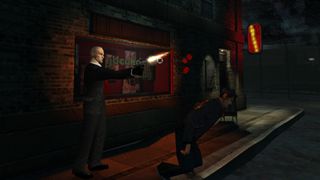

If you want in-depth features on classic video games delivered straight to your doorstop, subscribe to Retro Gamer today.
Thanks to its initial work on Rex Dominus as well as its prior experience making games, IO was comfortable creating open worlds that could run on low-end PCs. "We built a master system out of old-school tile maps we had used in a previous game, A-M-O-K," Jacob recalls, "as well as a simple module system that we had used in our 1996 title Scorcher. If I'm not mistaken, our system is used today when making maps for Hitman."
The first levels take place in Hong Kong, a hangover from the early storyboards. Agent 47 has escaped the lab from which he was hatched and is now working for the International Contract Agency. His target is Red Dragon Triad leader Lee Hong but smaller targets lie in wait first. The levels are bigger than your average shooter and were state of the art for the time as well. "I remember making a crazy animation for the aquariums in the Hong Kong restaurant, using deformations in 3D Studio Max and then 'baking' them out as vertex animations," Jacob recounts.
The action shifts to Columbia where drug lord Pablo Ochoa is in your sights. This a nod to Scarface and features an Agent 47 clad in war paint and military overalls. A shorter excursion through a Hungary hotel, based on Hotel Gellért, follows. "The mercenary, Frantz Fuchs, is modelled on a real Austrian terrorist named Franz Fuchs, a really scary guy, that I read about in the newspaper when designing the map," Jacob says.
Eventually, Hitman: Codename 47 comes full circle and you end up where you started: in the lab, face to face with your creator, a dastardly doctor by the name of Ort-Meyer. B-movie shlock is served up in spades culminating in a face off against the mad doctor and his army of clones. 47 prevails. Or does he? To say Codename 47 is punishing is like saying the Bugatti Veyron is just a car. True, but a gross understatement as well. The unpredictable NPCs are like drunk chess pieces capable of tottering across the board without warning, and for another, it's impossible to save mid-level, meaning the odds are always stacked against you.
"Codename 47 really showed that we were console developers," Jacob admits. "We didn't consider a save game option. On consoles at the time, you were just given a code that would allow you to skip levels that you had already completed. Also, the keyboard layout was all messed up. Still, one good thing we brought from consoles was the 3rd person perspective. All character based games on consoles had to be third-person. First-person was a PC-only thing at that time."
New targets
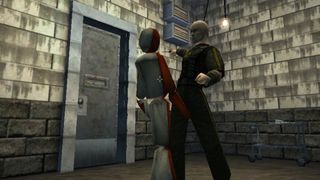
Hitman shipped at the tail-end of 2000, a markedly different game from the one that had first been conceived. With state-of-the-art ragdoll physics and gorgeous graphics it was a technical darling, but critics were divided on whether it was worth the price of admission. Some loved it, some felt it was too punishing, but Eidos spied the potential for more polished and user-friendly sequels to come.
Hitman 2: Silent Assassin shipped in 2002. This time, the PS2 and Xbox were the focus, though the PC and GameCube got versions, too. "Now that the main platform was PS2, we felt more at home," Jacob remembers, and it feels like a more polished, more assured effort, though hardcore fans scoffed at the introduction of a mid-level save system. The controls were improved and the team tried to fix AI problems, but NPCs found new ways to misbehave. "Many have tried to fix the AI since and all have failed," Jacob smiles. "It just has to have those odd moments, otherwise it wouldn't be Hitman."
That straight shooter that was supposed to pave the way for Rex Dominus had, well… turned into something rather momentous. Today, Agent 47 is the star of celluloid and the hero of several sequels in one of the biggest franchises in PC and console gaming. There have been six fully fledged titles and two Hollywood movies. Not bad for a "simple shooter".
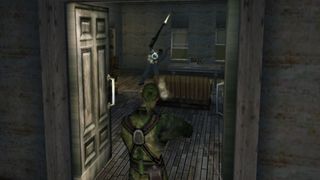
"Codename 47 really showed that we were console developers"
Jacob Anderson
Jacob Andersen would eventually lend his expertise to four of the Hitman titles. In addition to Codename 47 and Silent Assassin, he helped develop Hitman Contracts (2004) and series favourite Blood Money (2006). Today he works at the reformed Reto-Moto with many of the original IO crew. The team is hard at work on Heroes And Generals, a free-to-play shooter and strategy game that does a lot of things that were not possible in Hitman. In Jacob's words: "Multiplayer, a persistent online world and action, strategy and RPG elements – all in one game." Perhaps Rex Dominus, after all this time, lives on with a new name.
As for the man that helped steer Hitman in the direction we've all come to love, Jonas Eneroth worked on some of the biggest games of the Nineties and Noughties. He's now enjoying a change of pace in Malta as the cofounder of Karmafy. In Jonas' words: "Karmafy is a socially responsible charity platform for game developers to support good causes in their games." Interested? You can find out more at karmafy.com.
The story of the first Hitman is the story of boundaries being pushed to the extent that a new game was spied and developed. The story of Hitman is of best-laid plans falling at the wayside, and something new emerging in its stead. The classic games you know and love were never straightforward to make. No project ever is, no act of collaboration ever can be. Even the birth of a no-nonsense assassin had several twists and turns and forks in the road. But the good news? We got there in the end, and Codename 47 is a fitting blueprint for a truly wonderful series that endures to this day.
This feature first appeared in Retro Gamer magazine issue 181. For more excellent features, like the one you've just read, don't forget to subscribe to the print or digital edition at Magazines Direct.
